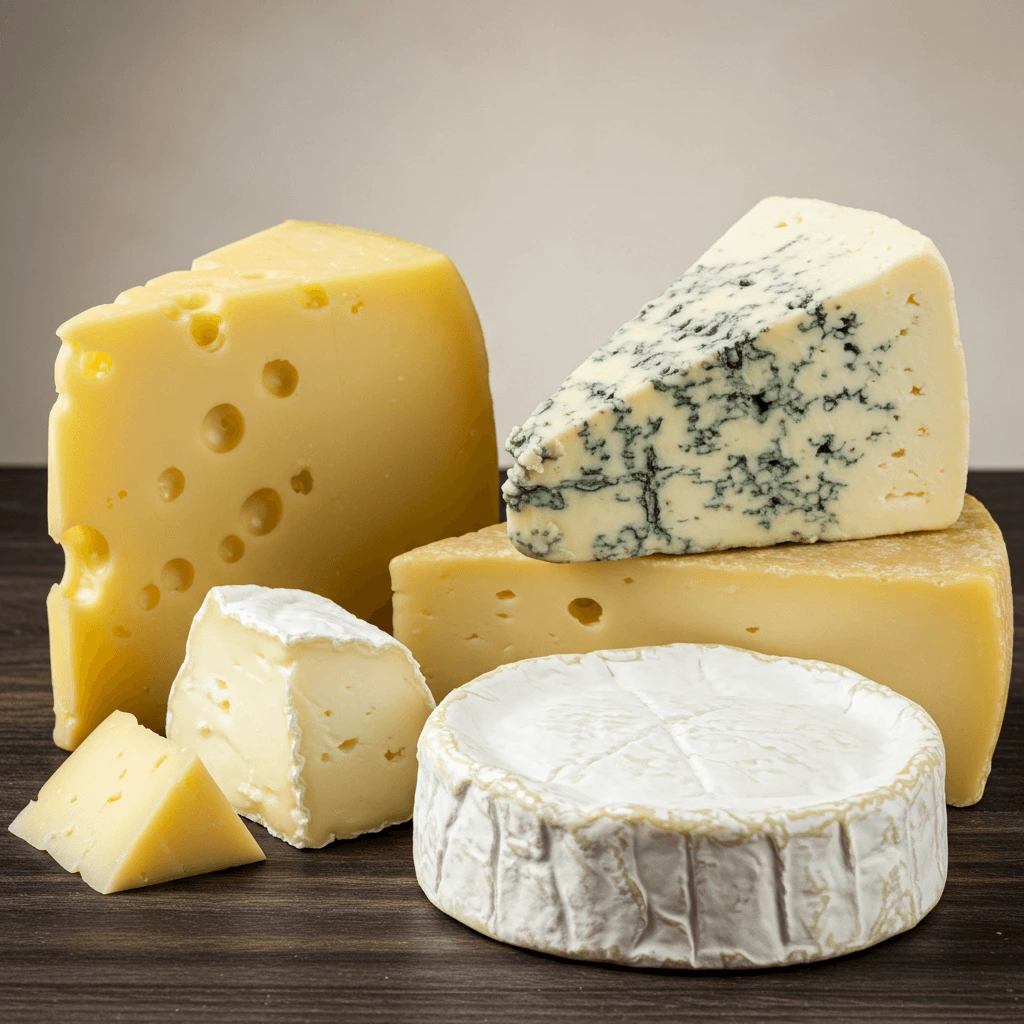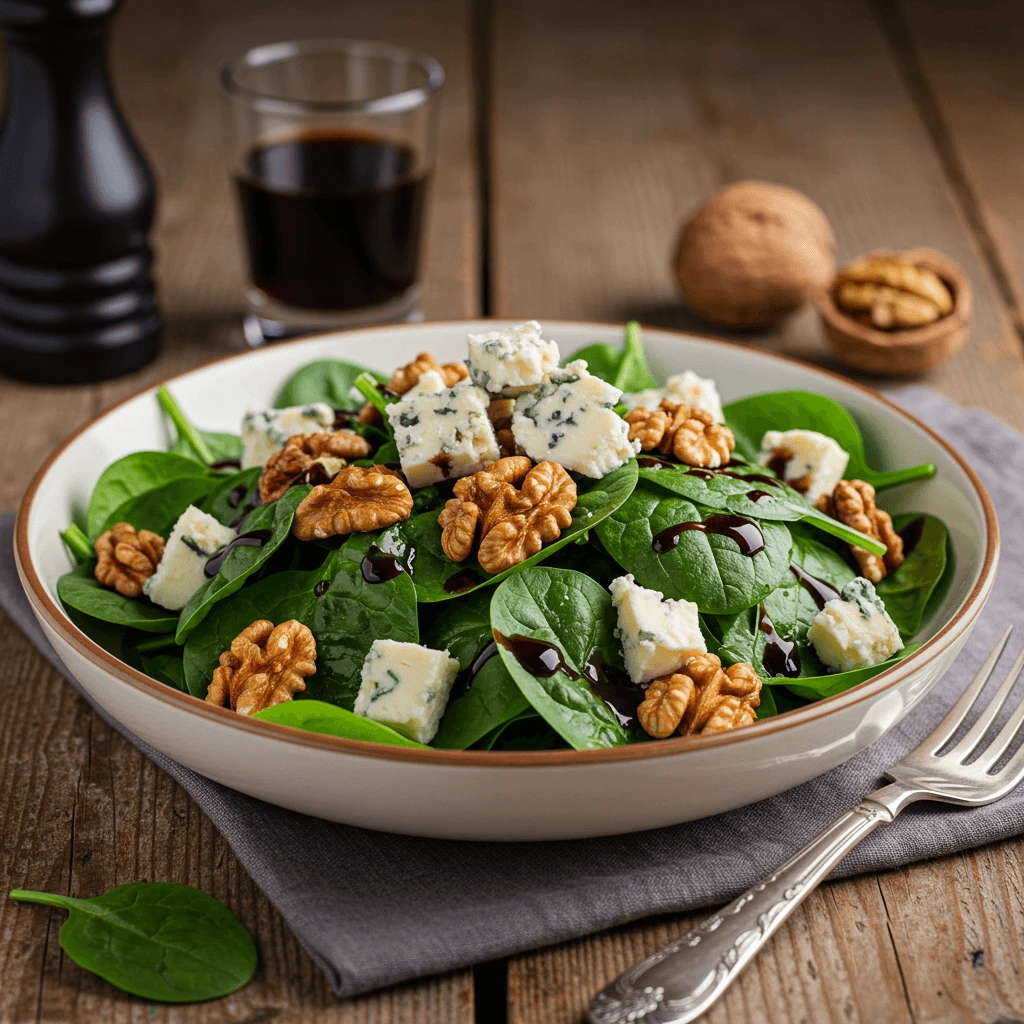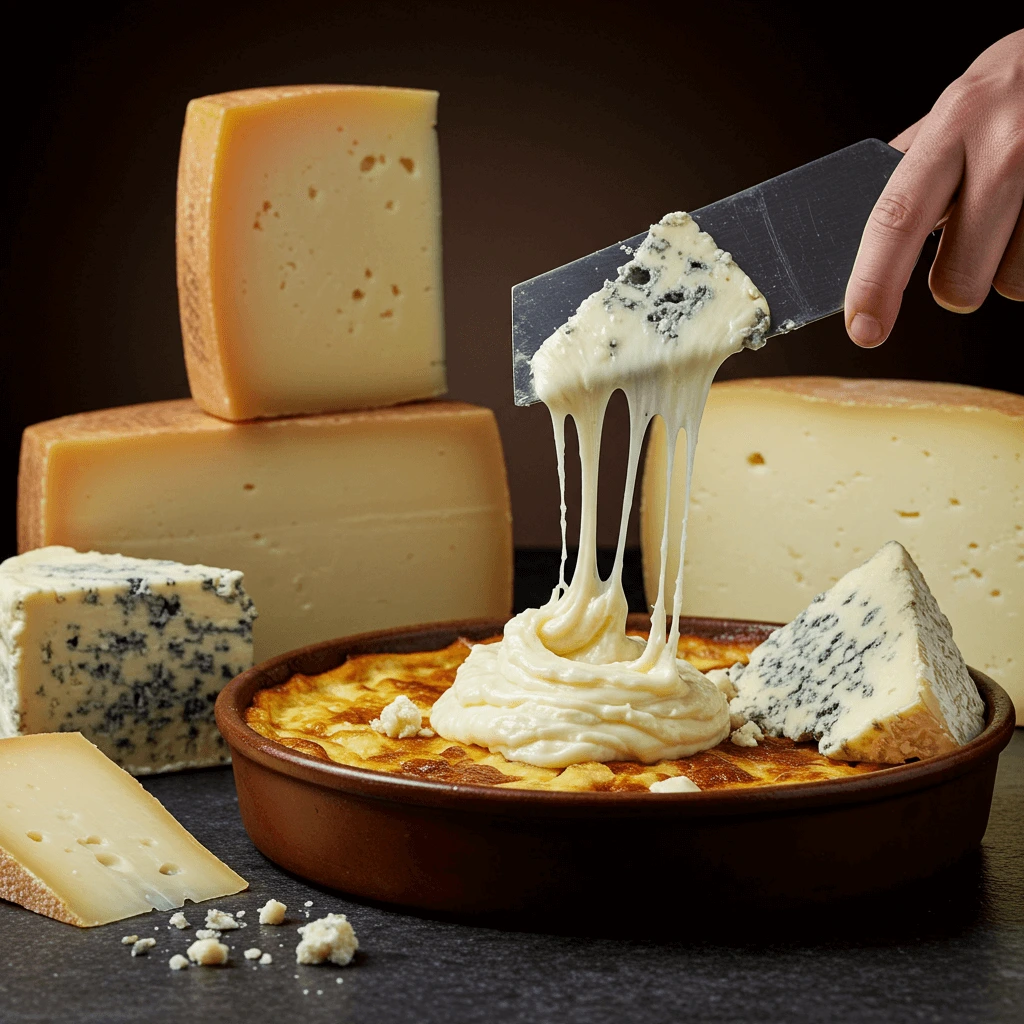If you’re a cheese lover, you’re in for a treat! Raw cheese or Natural cheese is a hidden gem in the world of dairy, offering a rich, natural flavor and a unique texture that sets it apart from processed cheeses. Made from unpasteurized milk, raw cheese retains all of its nutrients, probiotics, and bold taste, making it a delicious and wholesome choice for food enthusiasts.
But how can you incorporate this flavor-packed cheese into your daily meals? Whether you love a gooey, melty cheese experience or prefer it crumbled over fresh dishes, there are countless ways to enjoy Natural cheese in your cooking. In this guide, we’ll explore five delicious ways to use Natural cheese, from salads and pasta dishes to gourmet sandwiches and cheese pairings.
Ready to elevate your meals with the natural goodness of Natural cheese? Let’s dive in!
Why Raw Cheese is a Must-Try for Cheese Lovers
If you’re a true cheese enthusiast, raw cheese is something you simply can’t ignore. Unlike processed cheeses, Natural cheese is made from unpasteurized milk, preserving its natural flavors, textures, and health benefits. Here’s why you should give it a try:
Richer, More Complex Flavor
One of the biggest reasons to try Natural cheese is its depth of flavor. Since it isn’t subjected to high heat during pasteurization, the natural enzymes and bacteria remain intact, allowing for a more complex and bold taste. Whether it’s a sharp raw cheddar, a creamy Brie, or a tangy blue cheese, the taste is more vibrant and authentic compared to its pasteurized counterparts.
Packed with Nutrients and Probiotics
Raw cheese isn’t just about taste—it’s also a nutritional powerhouse. Because it is minimally processed, it retains essential vitamins, minerals, and healthy fats. Even better, Natural cheese is a natural source of probiotics, which are beneficial for gut health and digestion. These good bacteria support your immune system, making Natural cheese a delicious and functional food choice.
Unique Texture and Aroma
Another reason raw cheese is worth trying is its exceptional texture. Unlike processed cheese, which can be overly uniform, Natural cheese has a natural consistency that varies from batch to batch. It might be crumbly, creamy, or firm, depending on the variety. Additionally, the aging process enhances its aroma, adding another layer of sensory experience for cheese lovers.
A Traditional and Artisanal Experience
Raw cheese has been made using traditional methods for centuries, long before modern processing techniques. Many small, artisanal cheesemakers take pride in producing high-quality raw cheeses that reflect the heritage and culture of their region. Trying Natural cheese means supporting traditional cheese-making practices while indulging in an authentic gourmet experience.
If you haven’t yet tasted raw cheese, now is the perfect time to explore its incredible flavors and benefits. Whether you enjoy it on its own, paired with fruits and nuts, or melted into a dish, Natural cheese is an experience every cheese lover must try!
How to Choose the Best Raw Cheese for Your Recipes
Selecting the right raw cheese for your dishes can make a world of difference in both flavor and texture. Because Natural cheese comes in various styles, aging levels, and intensities, choosing the best one for your recipe requires some knowledge. Here’s how to pick the perfect Natural cheese for your culinary creations.
Consider the Type of Recipe You’re Making
Different raw cheeses work best in specific recipes. Here’s a quick guide:

- Melting Cheeses: If you’re making grilled cheese, fondue, or macaroni and cheese, go for raw cheeses that melt well, like raw cheddar, raw Gouda, or Fontina.
- Sharp & Aged Cheeses: For recipes that need a bold, tangy kick, such as salads, pasta, or charcuterie boards, use aged Natural cheese like raw Parmesan or raw blue cheese.
- Soft & Creamy Cheeses: If you’re making spreads, dips, or desserts, opt for raw Brie, raw Camembert, or raw goat cheese for a smooth, luxurious texture.
- Firm & Crumbly Cheeses: Dishes like tacos, grain bowls, or roasted vegetables pair well with crumbly raw cheeses like raw Feta or raw Cotija.
Check for Quality and Authenticity
Not all raw cheeses are created equal! Here’s what to look for:
- Labeling: Look for clear labels that say “raw milk cheese” or “made from unpasteurized milk.”
- Aging: In the U.S., raw cheeses must be aged at least 60 days to be legally sold. Aged varieties will have a more complex flavor, while younger cheeses will be creamier and milder.
- Artisanal Sources: Purchase from local cheesemakers or specialty stores to ensure authenticity. Mass-produced cheeses may lack the same depth of flavor as small-batch, traditionally made raw cheeses.
Understand Flavor Profiles
Raw cheese can have a wide range of flavors, from mild and nutty to tangy and pungent. Consider the overall taste of your dish:
- Mild & Buttery: Great for snacking, mild sauces, and pairing with fruits. (Try raw Havarti or young raw Gouda.)
- Nutty & Sweet: Perfect for baking or adding depth to sandwiches. (Try raw Swiss or raw Gruyère.)
- Sharp & Pungent: Ideal for bold-flavored dishes, such as pizzas, burgers, or gourmet mac and cheese. (Try raw Cheddar, raw Blue cheese, or aged raw Parmesan.)
Experiment and Find Your Favorites
The best way to discover your ideal raw cheese is to experiment! Try different varieties in your cooking, and pay attention to how they interact with other ingredients. Keep a tasting journal or simply note which cheeses work best in different dishes.
With these tips, you’ll be able to select the perfect Natural cheese for any recipe, elevating your meals with rich, natural flavors that only Natural cheese can provide.
5 Delicious Ways to Enjoy Raw Cheese in Your Meals
Raw cheese is a flavorful, nutrient-rich ingredient that can elevate any meal. Whether you’re a cheese lover looking for new ways to incorporate it into your diet or just getting started with Natural cheese, these five delicious ideas will inspire your next dish.
1. Raw Cheese and Fresh Fruit Pairings
One of the simplest yet most delicious ways to enjoy Natural cheese is by pairing it with fresh fruit. The natural sweetness of fruit perfectly balances the richness of cheese, making for a delightful snack or appetizer.

- Mild raw cheeses like raw Havarti or young raw Gouda pair beautifully with grapes, apples, or pears.
- Tangy cheeses such as raw goat cheese or raw feta complement berries and citrus fruits.
- Aged raw cheeses like raw cheddar or Parmesan go well with figs, dates, or dried apricots.
- Drizzle honey or balsamic glaze over your cheese and fruit for an extra touch of sweetness.
2. Raw Cheese in Sandwiches and Burgers
Raw cheese can take your sandwiches and burgers to the next level by adding deep, rich flavors and a creamy texture.
- Melt raw cheddar or Swiss cheese over a juicy burger for an unbeatable cheesy bite.
- Layer raw Brie or Camembert into a sandwich with roasted turkey and cranberry sauce.
- Use raw blue cheese in a steak sandwich for a bold, tangy kick.
- Try a grilled cheese sandwich with raw Gruyère and caramelized onions for a gourmet twist.
3. Natural cheese in Salads and Grain Bowls
Adding Natural cheese to salads and grain bowls is a great way to enhance flavor and texture while keeping the meal fresh and healthy.

- Crumble raw feta or goat cheese over a Mediterranean-style salad with olives, cucumbers, and cherry tomatoes.
- Shave raw Parmesan over a Caesar salad or a quinoa bowl for a nutty, umami-rich taste.
- Use raw blue cheese in a spinach and walnut salad with a balsamic vinaigrette.
- Add cubes of raw aged cheddar to a kale and apple salad for a delicious contrast of flavors.
4. Cooking with Natural cheese in Pasta and Casseroles
This Type of cheese is a fantastic addition to warm, comforting dishes like pasta and casseroles, where it can melt and blend beautifully with other ingredients.
- Make a creamy mac and cheese with raw cheddar, Gruyère, and Parmesan.
- Layer raw mozzarella in a homemade lasagna for a rich, gooey texture.
- Stir raw ricotta into pasta for a light, creamy finish.
- Sprinkle grated Natural cheese over a baked casserole for a golden, bubbly crust.
5. Raw Cheese as a Snack or Charcuterie Board Addition
Raw cheese shines on a charcuterie board, making it an excellent option for entertaining or casual snacking.
- Arrange a variety of raw cheeses with nuts, olives, and crackers for a sophisticated cheese platter.
- Enjoy raw cheese with cured meats like prosciutto or salami for a classic pairing.
- Serve raw cheddar cubes or Parmesan crisps as a protein-packed snack.
- Pair the cheese with artisanal bread and a side of fig jam or mustard for extra flavor.
Final Thoughts
Raw cheese is an incredibly versatile ingredient that can enhance both simple and gourmet meals. Whether you’re enjoying it fresh with fruit, melting it into a sandwich, or incorporating it into warm, cheesy dishes, there are countless ways to savor its rich, natural flavors. Try one (or all!) of these ideas and discover why Natural cheese is a must-have in your kitchen!
Storing and Preserving Raw Cheese for Maximum Freshness
Proper storage is essential to maintain the quality, flavor, and texture of raw cheese while preventing spoilage. Since Natural cheese is a natural and often unprocessed product, it requires specific care to preserve its freshness and nutritional benefits. Here’s how to store and preserve Natural cheese the right way:
1. The Best Temperature for Storing Raw Cheese
Temperature plays a crucial role in keeping raw cheese fresh.
- Store Natural cheese in the refrigerator at a temperature between 35°F and 45°F (1°C to 7°C).
- Avoid placing it in the coldest parts of the fridge, such as the back or near the freezer section, as extreme cold can alter its texture.
- If you have a cheese drawer or vegetable crisper, use it to maintain the ideal humidity levels.
- If storing for a long time, a temperature-controlled cheese cave or wine fridge (50°F to 55°F) can keep aged cheeses in perfect condition.
2. The Right Way to Wrap and Store Raw Cheese
The way you wrap raw cheese affects its ability to breathe while retaining moisture.
- Use wax paper, parchment paper, or cheese paper instead of plastic wrap, which can trap excess moisture and cause spoilage.
- For longer storage, wrap the cheese first in cheese paper or parchment paper, then place it inside a loose plastic bag or an unsealed container. This helps balance moisture and airflow.
- Avoid storing cheese in airtight containers, as cheese needs some air circulation to prevent mold growth.
- For soft cheeses, you can store them in their original packaging or a glass container with a loose lid to maintain freshness.
3. Preventing Mold Growth and Drying Out
Mold is a common issue when storing Natural cheese, but proper care can prevent it.
- Check cheese regularly for any mold spots. If mold appears on hard cheeses, simply cut off the affected area (at least 1 inch around and below the mold).
- For soft cheeses, discard them if they develop mold, as it can spread deep into the cheese.
- Keep cheese from drying out by wrapping it properly and not exposing it to direct airflow in the fridge.
- For extra moisture retention, place a damp paper towel in the cheese drawer or wrap cheese in a slightly dampened cloth inside a breathable container.
4. Freezing Raw Cheese: Yes or No?
Freezing raw cheese can help extend its shelf life, but it may alter its texture.
- Hard cheeses like cheddar, Gouda, and Parmesan freeze better than soft cheeses. When thawed, they may become more crumbly but still good for cooking.
- Soft cheeses like Brie or fresh mozzarella do not freeze well, as they lose their creamy texture.
- To freeze, wrap cheese tightly in plastic wrap, then aluminum foil, and store it in an airtight bag.
- When ready to use, thaw cheese in the refrigerator overnight instead of at room temperature to prevent excess moisture loss.
Final Thoughts
By following these simple storage techniques, you can keep Natural cheese fresh for longer while maintaining its rich flavors and textures. Proper wrapping, temperature control, and regular checks will help you enjoy your cheese at its best. Whether you’re storing it short-term for daily use or preserving it for future recipes, these methods ensure that your Natural cheese stays delicious and ready to enjoy!
FAQs About Raw Cheese
Natural cheese is a fascinating and flavorful option for cheese lovers, but it also comes with many questions about safety, nutrition, and best practices. Below, we address some of the most commonly asked questions about raw cheese to help you enjoy it with confidence.
1. What Is Raw Cheese?
Raw cheese is made from unpasteurized milk, meaning the milk has not been heated above 100°F to 120°F (37°C to 49°C) during production. Because it retains natural enzymes, bacteria, and nutrients, Natural cheese often has a more complex flavor than pasteurized cheese.
2. Is Raw Cheese Safe to Eat?
Yes, Natural cheese is safe to eat when properly aged and handled. Most raw cheeses are required to be aged for at least 60 days in the United States to reduce the risk of harmful bacteria. However, people with compromised immune systems, pregnant women, and young children may want to consult a healthcare provider before consuming Natural cheese.
3. How Does Natural cheese Taste Different from Pasteurized Cheese?
Raw cheese typically has a more intense, complex, and nuanced flavor than pasteurized cheese. Because the milk’s natural bacteria and enzymes remain intact, Natural cheese can develop deeper earthy, nutty, tangy, or sweet notes depending on the variety.
4. What Are the Benefits of Eating Raw Cheese?
Natural cheese is packed with nutrients and probiotics that can support gut health and digestion. Some benefits include:
- Higher probiotic content compared to pasteurized cheese.
- Richer vitamins and minerals, including calcium, vitamin K2, and omega-3 fatty acids.
- More intense flavors due to the natural aging and fermentation process.
5. How Can I Tell If a Cheese Is Raw?
Most raw cheeses are labeled with “Made from Unpasteurized Milk” or “Raw Milk Cheese.” If you’re unsure, check the ingredients list or ask your cheesemonger.

6. Can I Use Natural cheese in Cooking?
Yes! Natural cheese can be used in cooking, baking, and melting just like pasteurized cheese. However, heating it at high temperatures may reduce some of its beneficial probiotics and enzymes, so it’s often best enjoyed raw or lightly melted for maximum flavor and nutrition.
7. How Should I Store Natural cheese?
Raw cheese should be stored in the refrigerator at 35°F to 45°F (1°C to 7°C). Wrap it in cheese paper, wax paper, or parchment paper, and then place it in a breathable container to maintain freshness. Avoid airtight plastic wrap, as it can cause the cheese to sweat and spoil faster.
8. Where Can I Buy Natural cheese?
Natural cheese can be found at:
- Specialty cheese shops
- Farmers’ markets
- Organic grocery stores
- Online retailers specializing in artisan cheeses
Make sure to check that the cheese meets safety regulations and aging requirements in your country.
9. Can I Make Raw Cheese at Home?
Yes, you can make Natural cheese at home if you have access to high-quality raw milk. Popular homemade raw cheeses include raw cheddar, gouda, and soft cheeses like raw milk ricotta. However, it’s important to follow proper cheesemaking and aging techniques to ensure safety and quality.
Final Thoughts
Raw cheese is a delicious, nutrient-rich option that can elevate any meal with its depth of flavor and natural health benefits. Whether you’re a cheese enthusiast or just starting to explore Natural cheese, understanding its safety, uses, and storage tips will help you enjoy it with confidence.
Conclusion:
Raw cheese is more than just a delicious dairy product—it’s a flavor-packed, nutrient-rich ingredient that enhances any meal. From its complex taste profiles to its gut-friendly probiotics, Natural cheese offers a truly authentic cheese experience that pasteurized varieties simply can’t replicate.
By choosing high-quality raw cheese, storing it properly, and incorporating it into your favorite dishes, you can enjoy its full-bodied flavors while reaping the health benefits it provides. Whether you’re savoring it on a cheese board, melting it into a dish, or pairing it with wine and fruit, Natural cheese is a versatile delight for any food lover.
Now, it’s your turn! Have you ever tried raw cheese? What’s your favorite way to enjoy it? Drop a comment below and share your thoughts! And if you found this guide helpful, don’t forget to share it with your fellow cheese lovers.
Love Natural cheese? Take it a step further with fun and creative ways to use cheese cubes in your meals! Check out these delicious ideas here


1 thought on “5 Delicious Ways to Enjoy Raw Cheese in Your Meals”